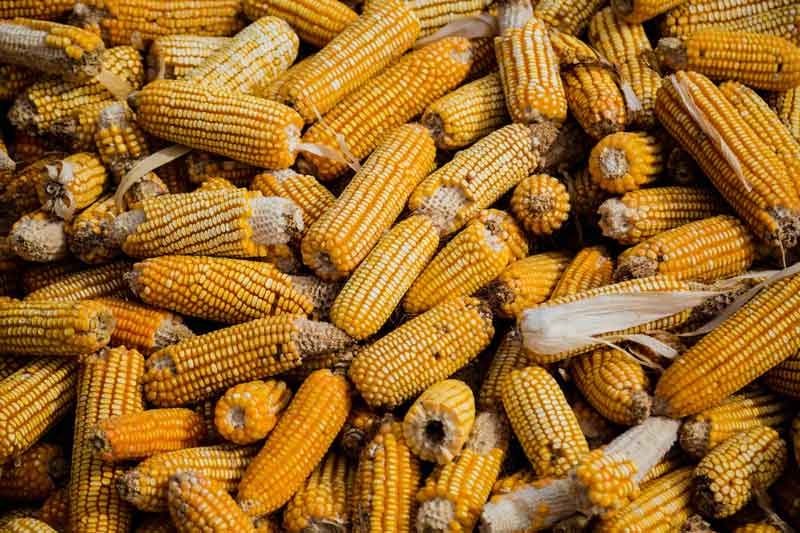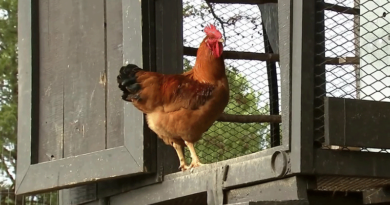The Wonderful World of Missouri Cornmeal
Once upon a time, in the ancient civilizations of Mesoamerica, cornmeal was a staple ingredient in daily meals. This golden-yellow powder, ground from dried corn, has been feeding people for thousands of years. In fact, cornmeal played a crucial role in the growth and development of ancient societies like the Aztecs and Mayans. Fast forward to today, and Missouri cornmeal remains an essential ingredient in various global cuisines. 🌽
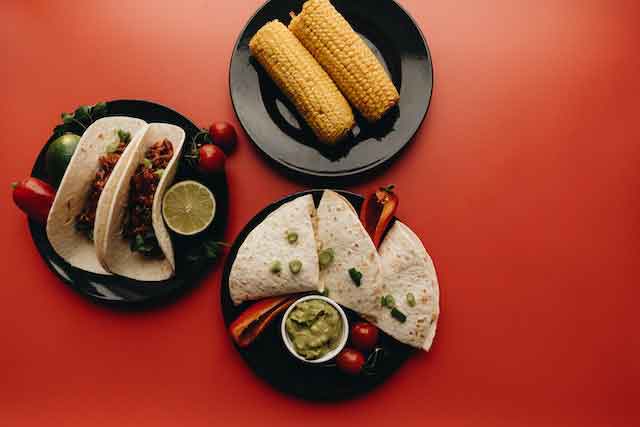
Diving Deeper: Types of Cornmeal – Fine, Medium, and Coarse
If you’ve ever found yourself in the baking aisle of a grocery store, you may have noticed that cornmeal isn’t a one-size-fits-all ingredient. There’s a whole world of cornmeal out there, just waiting to add unique textures and flavors to your culinary creations. So, let’s embark on a journey to explore the differences between fine, medium, and coarse corn-meal, shall we?
Fine Cornmeal: The Delicate Dynamo
Fine cornmeal, also known as corn flour or masa harina, is the most finely ground variety of cornmeal. With a texture that’s as soft as a baby’s giggle, this delicate powder is perfect for creating light, tender baked goods. Think airy corn tortillas and fluffy corn muffins, and you’ll be on the right track. Its fine texture allows it to blend seamlessly with other ingredients, making it an excellent choice for batters and coatings, like those used for crispy fried fish or golden onion rings.
Medium Cornmeal: The All-Around Champion
Medium cornmeal, often referred to as “polenta” or “corn grits,” is the versatile middle child of the cornmeal family. It’s coarser than fine cornmeal but still has a relatively smooth texture, making it the Goldilocks of cornmeal varieties – not too fine, not too coarse, but just right. This all-around champion is a favorite for making, well, polenta, as well as cornbread, hush puppies, and pancakes. It’s the go-to choice when you want a bit of that signature cornmeal crunch without going overboard.
Coarse Cornmeal: The Rustic Rebel
Coarse cornmeal, or grits, is the most rebellious member of the cornmeal clan, with a texture that’s as bold and unapologetic as a classic rock anthem. Its large granules give dishes a hearty, rustic appeal that’s perfect for those who enjoy a bit of toothsome texture in their meals. From Southern-style shrimp and grits to hearty bowls of porridge, coarse cornmeal is the ideal choice for comfort food lovers everywhere.
In conclusion, the world of cornmeal is as diverse as it is delicious. Whether you’re a fan of delicate fine cornmeal, the versatile medium variety, or the robust coarse option, there’s a cornmeal out there that’s perfect for your next culinary adventure. So go ahead, experiment, and have fun – your taste buds will thank you!
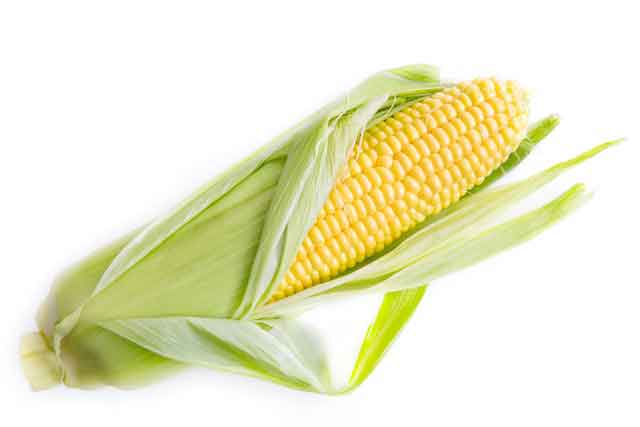
The Nutritional Benefits of Cornmeal: A Wholesome Powerhouse
If you’re looking for a versatile ingredient that’s not only tasty but also packed with nutritional goodness, cornmeal should be at the top of your list. This unassuming golden powder boasts a wealth of health benefits that make it a valuable addition to any balanced diet. So, let’s put on our nutrition detective hats and uncover the wholesome secrets of cornmeal!
Fiber Fiesta
One of the most notable nutritional benefits of cornmeal is its fiber content. Fiber is a dietary superhero, helping to keep our digestive systems running smoothly and promoting a feeling of fullness. This unsung hero can also play a role in maintaining healthy cholesterol levels, regulating blood sugar, and even aiding in weight management. With cornmeal on your side, you’ll be dancing your way to a fiber fiesta!
Vitamins and Minerals Galore
Cornmeal is no slouch when it comes to essential vitamins and minerals. It’s a great source of B vitamins, such as thiamin, niacin, and folate, which are crucial for energy production, brain function, and a healthy nervous system. Cornmeal also contains minerals like iron, magnesium, and zinc. Iron helps keep our red blood cells in tip-top shape, while magnesium plays a key role in muscle function and bone health. As for zinc, it’s essential for a strong immune system and healthy skin.
Gluten-Free Goodness
For those with gluten sensitivities or celiac disease, cornmeal is a culinary lifesaver. This naturally gluten-free ingredient offers a tasty and nutritious alternative to wheat-based products, allowing everyone to enjoy the joys of baking and cooking without worry. From gluten-free cornbread to delectable cornmeal pancakes, there’s no need to miss out on your favorite dishes.
A Heart-Healthy Choice
When consumed as part of a balanced diet, cornmeal can contribute to heart health. Its fiber content helps to lower LDL cholesterol (the “bad” cholesterol), while its B vitamins and minerals support healthy blood pressure and circulation. Additionally, cornmeal is low in saturated fat, making it a heart-friendly option for those looking to keep their ticker in top shape.
The Whole Package
In a nutshell, cornmeal is a nutritional powerhouse that deserves a spot in your pantry. With its abundance of fiber, vitamins, minerals, and gluten-free properties, this versatile ingredient is the complete package. So, the next time you’re whipping up a meal or a scrumptious treat, don’t forget to invite cornmeal to the party – your body will thank you!
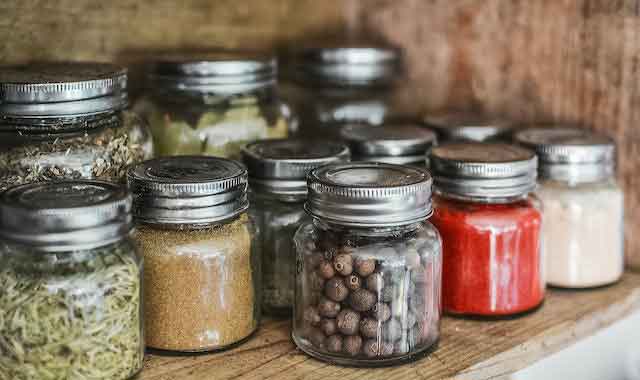
Preparing and Storing Cornmeal: A Guide to Culinary Success
Cornmeal is a fantastic ingredient with a wide range of applications, but to truly unlock its potential, it’s essential to know how to properly prepare and store it. With a dash of organization, a pinch of care, and a sprinkle of creativity, you’ll be well on your way to cornmeal culinary success. So, let’s roll up our sleeves and dive into the art of preparing and storing cornmeal! 🚜
Preparing Cornmeal: A Symphony of Flavors and Textures
-
Choose the right variety: Before you begin, make sure you’ve selected the appropriate type of cornmeal for your recipe, whether it’s fine, medium, or coarse. Each variety offers a unique texture and flavor, so it’s important to choose the right one for your culinary masterpiece.
-
Sift, if needed: For recipes requiring a finer texture, consider sifting your cornmeal to remove any larger particles. This extra step can make all the difference in achieving a smooth and even consistency.
-
Cook it to perfection: When cooking cornmeal, whether it’s for polenta, porridge, or a batter, be sure to follow the recipe instructions carefully. Gradually add the cornmeal to the liquid while stirring constantly to avoid lumps. Adjust the heat as needed to maintain a gentle simmer and prevent the cornmeal from sticking to the bottom of the pot. Patience is key; allow the cornmeal to cook slowly and fully absorb the liquid for the best results.
-
Experiment and have fun: Don’t be afraid to get creative with your cornmeal recipes! Add herbs, spices, cheeses, or other flavorful ingredients to transform a simple dish into a mouthwatering culinary experience.
Storing Cornmeal: Keep It Fresh and Flavorful
-
Airtight is right: To maintain the freshness and quality of your cornmeal, store it in an airtight container. This will help to keep out moisture, pests, and unwanted odors, ensuring your cornmeal stays in prime condition.
-
Cool, dark, and dry: Store your cornmeal in a cool, dark, and dry place, such as a pantry or cupboard. Exposure to heat, light, and moisture can degrade the quality and shelf life of your cornmeal.
-
Fridge or freezer for long-term storage: If you don’t use cornmeal frequently or have a large quantity to store, consider keeping it in the refrigerator or freezer. This will help to preserve its freshness and flavor for even longer.
-
Keep track of the date: It’s a good idea to label your cornmeal container with the date of purchase or the “best by” date from the packaging. This will help you keep track of its freshness and ensure you’re using it at its best.
By mastering the art of preparing and storing cornmeal, you’ll be well-equipped to create delicious, nutritious, and satisfying dishes that showcase this versatile ingredient. So go forth, experiment, and savor the delightful world of cornmeal!
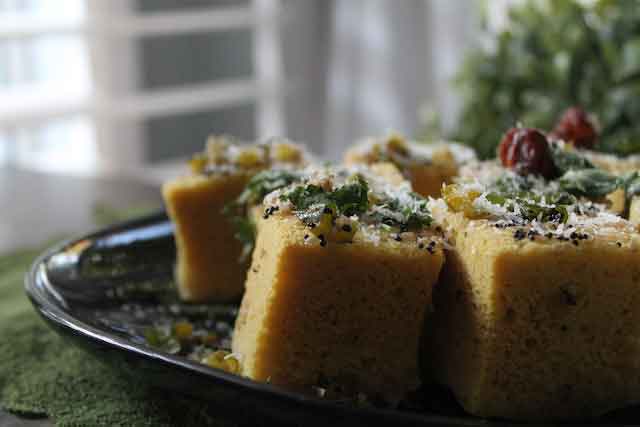
Delectable Cornmeal Recipes: A Culinary Adventure Awaits
Cornmeal is a versatile and delicious ingredient that can be used to create a wide variety of scrumptious dishes. From mouthwatering main courses to irresistible desserts, the possibilities are endless. To celebrate the culinary wonders of cornmeal, here are a few delectable recipes that will take your taste buds on a flavor-packed adventure. 🌽
1. Classic Southern Cornbread
A true staple in Southern cuisine, this cornbread recipe is the perfect balance of savory and sweet, with a golden crust and tender, moist interior.
- 1 cup medium cornmeal
- 1 cup all-purpose flour
- 2 teaspoons baking powder
- 1/2 teaspoon baking soda
- 1/2 teaspoon salt
- 1/4 cup sugar (optional, for a sweeter cornbread)
- 1 cup buttermilk
- 1/4 cup unsalted butter, melted
- 2 large eggs
Preheat your oven to 425°F (220°C) and grease a 9-inch round cake pan or cast iron skillet. In a large bowl, whisk together the cornmeal, flour, baking powder, baking soda, salt, and sugar (if using). In a separate bowl, combine the buttermilk, melted butter, and eggs. Pour the wet ingredients into the dry ingredients and mix until just combined. Pour the batter into the prepared pan and bake for 20-25 minutes, or until a toothpick inserted into the center comes out clean.
2. Cheesy Polenta with Roasted Vegetables
This comforting dish features creamy, cheesy polenta topped with a medley of flavorful roasted vegetables.
For the polenta:
- 4 cups water
- 1 cup medium cornmeal
- 1/2 teaspoon salt
- 1 cup grated Parmesan cheese
- 2 tablespoons unsalted butter
For the roasted vegetables:
- 2 cups cherry tomatoes, halved
- 2 cups zucchini, diced
- 2 cups bell peppers, diced
- 1/4 cup olive oil
- Salt and pepper, to taste
- Fresh basil leaves, for garnish
Preheat your oven to 400°F (200°C). Toss the vegetables with olive oil, salt, and pepper, and spread them out on a baking sheet. Roast for 25-30 minutes, or until tender and caramelized.
Meanwhile, bring the water to a boil in a large saucepan. Gradually whisk in the cornmeal and salt, reduce the heat to low, and cook, stirring frequently, for 20-25 minutes, or until creamy and tender. Remove from heat and stir in the Parmesan cheese and butter.
To serve, spoon the polenta onto plates and top with the roasted vegetables. Garnish with fresh basil leaves.
3. Lemon-Blueberry Cornmeal Pancakes
These fluffy pancakes combine the bright flavors of lemon and blueberries with the delightful crunch of cornmeal.
- 1 cup all-purpose flour
- 1/2 cup medium cornmeal
- 1/4 cup sugar
- 1 teaspoon baking powder
- 1/2 teaspoon baking soda
- 1/2 teaspoon salt
- 1 cup buttermilk
- 1/4 cup unsalted butter, melted
- 2 large eggs
- Zest of 1 lemon
- 1 cup fresh or frozen blueberries
- Maple syrup, for serving
In a large bowl, whisk together the flour, cornmeal, sugar, baking powder, baking soda, and salt. In a separate bowl, combine the buttermilk, melted butter, eggs, and lemon zest. Pour the wet ingredients into the dry ingredients and mix until just combined. Gently fold in the blueberries.
Preheat a nonstick griddle or skillet over medium heat. Grease the surface with butter or cooking spray. Pour about 1/4 cup of batter per pancake onto the hot griddle and cook until bubbles form on the surface and the edges appear set. Flip the pancakes and cook for an additional 1-2 minutes, or until golden brown and cooked through.
Serve the pancakes warm, topped with a drizzle of maple syrup and a sprinkling of extra blueberries if desired.
4. Skillet Cornmeal Cookie with Caramel and Chocolate
This decadent dessert is a delightful fusion of a chewy cornmeal cookie and gooey caramel, all topped with a generous drizzle of melted chocolate.
- 1/2 cup unsalted butter, softened
- 3/4 cup brown sugar
- 1/4 cup granulated sugar
- 1 large egg
- 1 teaspoon vanilla extract
- 1 cup all-purpose flour
- 1/2 cup fine cornmeal
- 1/2 teaspoon baking soda
- 1/4 teaspoon salt
- 1 cup caramel sauce, store-bought or homemade
- 1/2 cup chocolate chips, melted
Preheat your oven to 350°F (180°C) and grease a 10-inch cast iron skillet or round cake pan. In a large bowl, cream together the butter, brown sugar, and granulated sugar until light and fluffy. Add the egg and vanilla extract, and mix until combined.
In a separate bowl, whisk together the flour, cornmeal, baking soda, and salt. Gradually add the dry ingredients to the wet ingredients, mixing until just combined. Spread the cookie dough evenly in the prepared skillet or pan.
Bake for 20-25 minutes, or until the edges are golden brown and the center is slightly underbaked. Remove the skillet from the oven and let the cookie cool slightly. Pour the caramel sauce over the warm cookie and spread it evenly with a spatula.
Melt the chocolate chips in a microwave-safe bowl in 30-second increments, stirring after each interval until smooth. Drizzle the melted chocolate over the caramel layer. Allow the chocolate to set before slicing and serving.
These delectable cornmeal recipes showcase the incredible versatility of this humble ingredient. Whether you’re craving something sweet, savory, or somewhere in between, cornmeal is sure to inspire your next culinary creation. Happy cooking!
Regional Cornmeal Delicacies: A World of Flavorful Discoveries
Cornmeal has been a staple ingredient in various cuisines across the globe for centuries. Each region brings its unique touch to this versatile ingredient, transforming it into mouthwatering delicacies that showcase their culinary heritage. Let’s embark on a flavorful journey to explore some of the most beloved regional cornmeal creations.
1. Italy: Polenta
Polenta, a staple in Italian cuisine, is a creamy, porridge-like dish made from coarsely ground cornmeal. It can be served soft and creamy, or cooled and sliced into firm wedges before being grilled or fried. Polenta is often paired with rich sauces, braised meats, or roasted vegetables, making it a versatile and comforting dish enjoyed throughout the country.
2. Mexico: Corn Tortillas
Corn tortillas are an integral part of Mexican cuisine, used in everything from tacos and enchiladas to chilaquiles and quesadillas. Made from finely ground cornmeal (masa harina) and water, these soft, pliable disks are cooked on a hot griddle until slightly puffed and browned. Their earthy flavor and delicate texture make them the perfect vehicle for a wide variety of fillings and toppings.
3. Southern United States: Hush Puppies
Hush puppies are a beloved Southern treat, made from a mixture of cornmeal, flour, eggs, and buttermilk, with chopped onions and spices added for extra flavor. These delectable little bites are deep-fried until golden brown and crispy on the outside, with a tender, moist interior. Hush puppies are often served as a side dish with fried fish or barbecue, making them a quintessential comfort food in the Southern United States.
4. Brazil: Pão de Queijo
Although not made exclusively from cornmeal, these delightful Brazilian cheese breads (pão de queijo) often incorporate it alongside tapioca flour for added texture and flavor. The dough, made from a mixture of flours, grated cheese, eggs, and milk, is rolled into small balls and baked until puffed and golden. Pão de queijo is enjoyed as a snack, breakfast treat, or appetizer, and is a true taste of Brazilian hospitality.
5. South Africa: Pap
Pap, also known as mieliepap or maize porridge, is a staple food in South Africa. This simple yet hearty dish is made by cooking cornmeal in water or milk until it reaches a thick, porridge-like consistency. Pap can be served soft or firm, and is often accompanied by flavorful sauces, grilled meats, or vegetables. It is a versatile and satisfying base for many South African meals.
6. Romania: Mămăligă
Mămăligă, a traditional Romanian dish, is similar to Italian polenta but with a firmer texture. Made from boiling cornmeal with water and salt, mămăligă is cooked until it reaches a thick consistency and is then cooled and cut into slices. It is commonly served as a side dish with stews, grilled meats, or sausages, and is sometimes topped with sour cream, cheese, or butter for added richness.
These regional cornmeal delicacies offer a glimpse into the diverse and flavorful world of cornmeal-based dishes. Each culture brings its own unique spin to this versatile ingredient, creating delicious and comforting foods that are enjoyed by people all around the globe. So go ahead, explore new cuisines, and let cornmeal be your passport to a world of delectable discoveries!
The Future of Cornmeal in Cooking: Exploring New Culinary Frontiers
As a versatile, nutritious, and globally beloved ingredient, cornmeal has proven itself to be a timeless staple in the culinary world. As we look to the future of cooking and food trends, it is clear that cornmeal will continue to play a crucial role in shaping our culinary landscape. Here are some ways cornmeal’s influence may continue to evolve and inspire future generations of chefs and home cooks alike.
1. Health-Conscious Cooking
With an increasing focus on healthier diets and lifestyles, cornmeal’s nutritional benefits are becoming more widely recognized. As a whole grain, cornmeal is a great source of dietary fiber, vitamins, and minerals. Its gluten-free nature also makes it a valuable option for those with gluten sensitivities or celiac disease. We can expect to see cornmeal incorporated into more health-conscious recipes, providing a nutritious and delicious alternative to refined grains and flours.
2. Fusion Cuisine
Fusion cuisine, which combines elements from different culinary traditions, has been on the rise in recent years. Cornmeal’s versatility makes it a prime candidate for innovative fusion dishes, as it can easily be adapted to suit various flavors and textures. As chefs continue to experiment with blending cuisines, cornmeal will likely play a starring role in many creative and delicious fusion recipes, from Tex-Mex polenta bowls to cornmeal-crusted sushi rolls.
3. Plant-Based Diets
As plant-based diets gain popularity, cornmeal offers an opportunity to create satisfying, meat-free dishes that cater to the growing demand for vegan and vegetarian options. From veggie-packed cornbread to protein-rich bean and cornmeal patties, cornmeal provides a hearty and flavorful base for plant-based meals. We can expect to see more inventive cornmeal-based dishes that cater to a variety of dietary preferences.
4. Sustainability and Local Sourcing
In an effort to reduce our carbon footprint and support local economies, the focus on sustainable and locally sourced ingredients has become more prominent. Corn is a widely grown crop in many regions, making cornmeal a sustainable and easily accessible option for chefs and home cooks alike. As we continue to prioritize local, eco-friendly food sources, cornmeal’s role in regional cuisine will likely become even more significant.
5. Rediscovering Traditional Recipes
As interest in traditional and heirloom recipes grows, we can expect to see a resurgence of classic cornmeal-based dishes from various cultures. By exploring and reviving time-honored recipes, cooks can pay homage to culinary traditions while introducing new generations to the delicious versatility of cornmeal. From Native American cornmeal cakes to West African kenkey, there is a wealth of heritage recipes waiting to be rediscovered and cherished.
The future of cornmeal in cooking is bright, with countless opportunities to expand its culinary reach and potential. As we continue to explore new ways to use this versatile ingredient, cornmeal will undoubtedly remain a beloved staple in kitchens around the world, nourishing and inspiring us for generations to come.
Frequently Asked Questions
Q: Is cornmeal the same as cornstarch?
- A: No, cornmeal is ground dried corn, while cornstarch is a fine powder made from the starchy part of the corn kernel.
Q: Can I use cornmeal as a substitute for flour in recipes?
- A: Cornmeal can be used as a substitute for flour in some recipes, but it will affect the texture of the finished product. It’s best to find a recipe specifically designed for cornmeal.
Q: Is cornmeal gluten-free?
- A: Yes, cornmeal is naturally gluten-free, making it a suitable option for those with gluten sensitivities or celiac disease.
Q: What is the difference between cornmeal, polenta, and grits?
- A: Cornmeal, polenta, and grits differ mainly in texture, with cornmeal being the finest, followed by polenta, and grits being the coarsest.
Q: Can I use cornmeal to thicken soups and sauces?
- A: Yes, cornmeal can be used as a thickening agent in soups and sauces. Be sure to add it gradually and stir continuously to avoid lumps.
Q: How long does cornmeal last when stored properly?
- A: When stored in an airtight container in a cool, dark place, cornmeal can last up to one year. If refrigerated or frozen, its shelf life can be extended even further.
Q: Can I make my own cornmeal at home?
- A: Yes, you can make your own cornmeal by grinding dried corn kernels in a high-powered blender or grain mill. Be sure to sift the ground cornmeal to achieve the desired texture.
Q: Is cornmeal healthy?
- A: Cornmeal is a nutritious ingredient that is high in fiber, vitamins, and minerals. However, like any food, it’s important to enjoy it as part of a balanced diet and in moderation.

